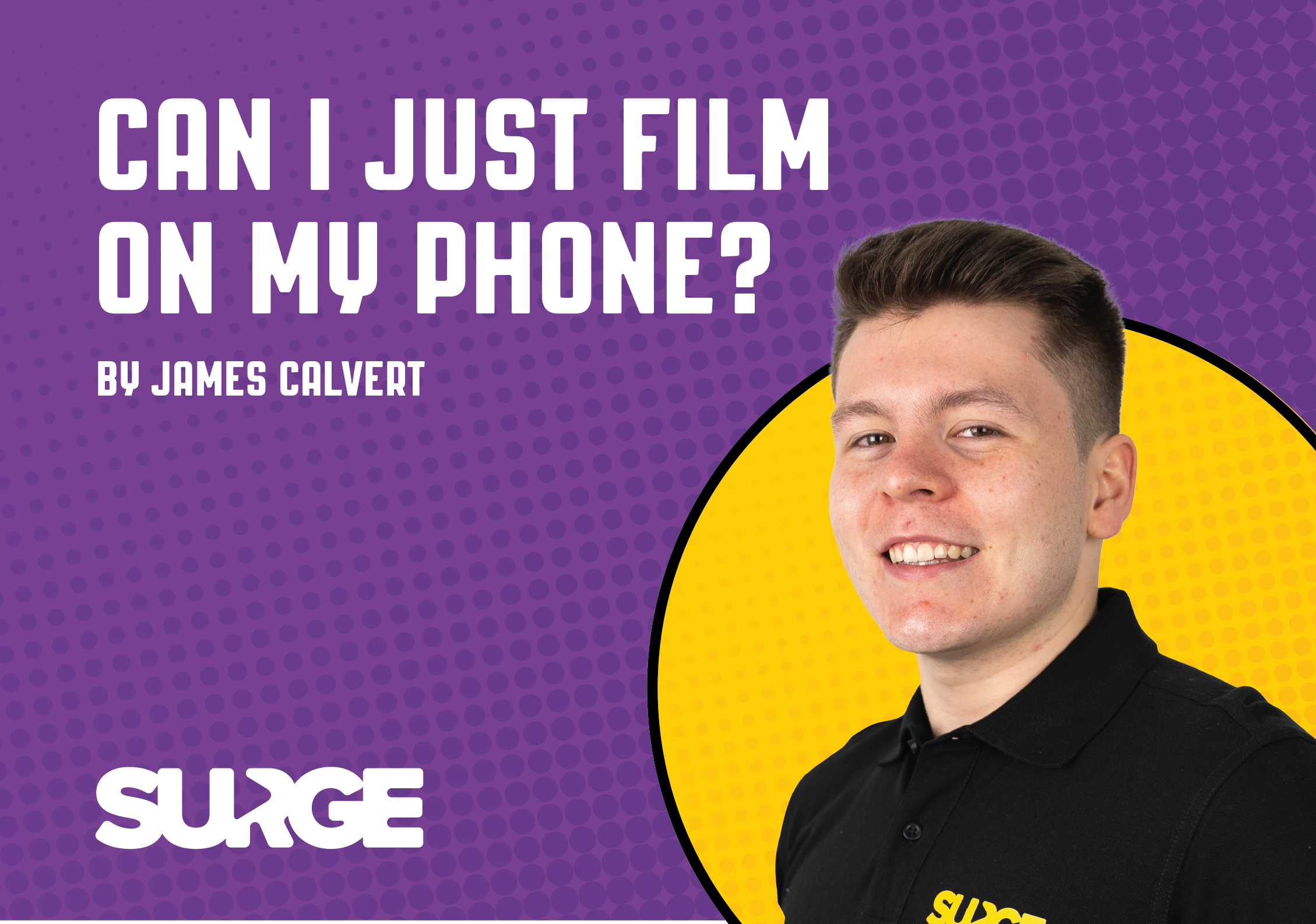
We’ve all seen those slick “Shot on iPhone” ads and thought, "I could do that."
And the truth is… yeah, you probably could. Kind of.
But the real question is: "Do you actually want to? And more importantly, should you?"
Here’s a proper breakdown of when it makes sense to film on your phone, and when it’s worth getting serious and picking up a camera (or working with someone who does).
Filming on Your Phone: What’s Good, What’s Not
Your phone’s always on you. The cameras are better than ever. And for stuff like TikToks, Reels, or quick updates? It’s perfect.
You can shoot on the fly, drop in a trending sound, add a bit of text, and you’re away. It’s great for light, quick-turnaround content. And if that’s what you need, keep doing it. Don’t overcomplicate.
But when you’re trying to create something longer, sharper, or more polished, like an ad, a promo video, a case study, the cracks start to show.
Here’s why:
Audio: Your phone mic will pick up everything. Echo, background noise, wind, you name it. Not ideal when you’re trying to sound professional.
Lighting: Unless you’re standing in front of a window at golden hour, your footage can end up flat or blown out. You can buy extra lights, but now we’re adding kit.
Zoom: Digital zoom on phones is basically cropping. You lose quality fast.
Storage: 4K video eats your storage for breakfast. Suddenly you’re deleting photos of your dog just to finish filming.
Editing: You’ll probably need to tidy up what you shoot. You can edit on your phone, but most decent tools cost money. And the pro-level stuff? That’s proper software. Now you need to learn that too.
Colour: The iPhone 15 Pro lets you shoot in flat colour. Which sounds cool. But unless you know how to colour grade, it’s just another thing to figure out.
So yeah, filming on your phone is quick and cheap, until it isn’t. Once you start trying to do more, you hit a wall.
What Happens When You Use a Proper Camera
We filmed the exact same setup twice: once on a phone, once on a Canon 90D. Here’s what stood out.
Depth: Cameras let you control depth of field properly, so you can blur the background and focus where it matters. The phone version tried, but it’s not the same.
Lighting: With LED panel lights and proper exposure settings, the shot looked cleaner and more polished. It just had that “finished” feel.
Audio: We used a lav mic straight into the camera, clean, clear, no syncing needed. That one little upgrade made a massive difference.
Colour: When you film in log and colour grade it properly, your footage just looks better. Richer. More cinematic. You can’t fake that with a filter.
Control: You’ve got full control over exposure, focus, white balance, frame rate, everything. You’re not fighting the phone’s auto settings.
Yes, there’s more kit. But it’s kit that makes your life easier, not harder.
Is It Worth the Investment?
That depends on what you’re making, and what your time’s worth.
If you’re filming weekly TikToks, you don’t need a DSLR. But if you’re spending hours trying to get your phone content to look half-decent, and still not happy with the results? That’s your sign.
The Canon 90D we have used has been around since 2019 and it’s still a staple in the industry. It shoots 4K at 60fps, has great battery life, weather sealing, and solid image quality. You won’t outgrow it overnight.
Add a few basics, like a Neewer light panel, a tripod, and a decent Rode mic, and you’ve got a setup that’ll make your life a lot easier. You don’t need to break the bank to level up. You just need the right kit, and a bit of know-how.
So… What Should You Use?
Here’s the honest answer.
Use your phone if the goal is speed, volume, or social media consistency. Your audience will forgive a little scrappiness if the content is fun or useful.
Use a camera when the goal is quality, clarity, or conversion. If you're trying to look professional and build trust, production value matters.
Final Thought
Good content isn’t just about good gear. It’s about time, skill, and knowing what you’re trying to say.
If you’ve got the time to learn and enjoy doing it yourself, go for it. But if you’re spinning plates, juggling 50 other things, and just want it done right?
Then that’s when it’s worth investing in someone who can help. Someone like Surge.
We’ll bring the camera. You just bring the story.
Give us a shout, book a chat, or pop into the office for a brew and a discovery conversation. No pressure. Just honest advice and a team that knows what they’re doing.